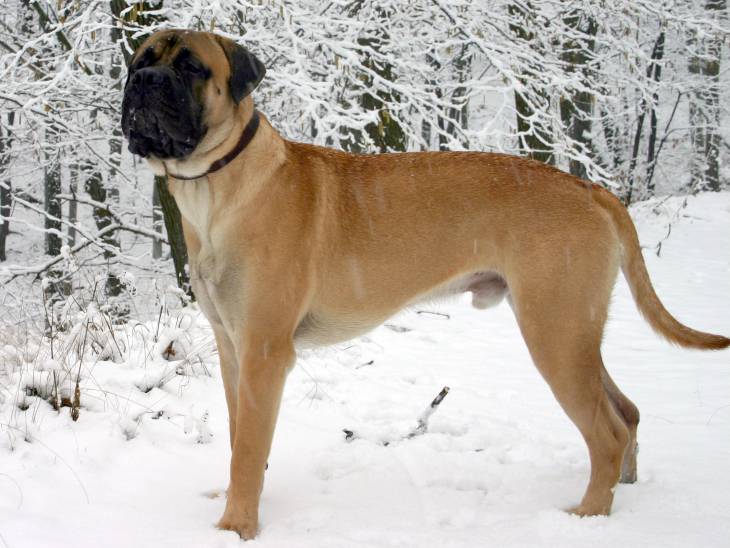Do Male Dogs Have Nipples? (A Biological Mystery)
Male and female dogs are different. This may be best highlighted from a reproductive and pregnancy standpoint. And when it comes to things regarding the continuation of the breed, it could be safe to assume that female dogs have nipples and males don’t. But is that true?
The Short Answer: Yes, they Do!
All dogs, both male and female, have nipples. Just as in the case of females, the nipples on a male pooch manifest themselves side by side and run down the length of his torso. You’ll see the nipples start on the chest and go all the way down to the groin area.
The number of nipples on a dog will greatly depend on the size of the dogs. If you got a larger dog, you’ll get about ten nipples, whereas a smaller pooch will have eight nipples. This is indeed an average number, as there can be some variance as to how many nipples manifest.
What’s more, the nipples have different names. These names are representative of their location on the body. If a male dog has ten nipples, he’ll have a pair of cranial thoracic nipples, a pair of caudal thoracic nipples, a pair of cranial abdominal nipples, a pair of caudal abdominal nipples, and a pair of inguinal nipples.
That’s Great and All, but do they Serve a Purpose?
Just like humans, the primary purpose of nipples is to secrete milk to young. Also like humans, male dogs do not have the ability to produce the milk needed for nourishment. As such, they are suspended in what is commonly referred to as a rudimentary state.
So why they are on a male dog if they really don’t do anything? The most logical explanation for this may have its roots in the dog’s fetal development. We can ascertain this in a way by looking at our own embryonic development.
When humans embryos develop, they start out by having no distinguishing characteristics. This changes when the sex hormones start to flow, which causes sexual differentiation. This same process happens in the canine world about a month after conception.
It is thought that the body’s blueprint includes nipples before sexual differentiation occurs. As such, the body doesn’t develop nipples as wantonly as it may seem. It’s just a matter of what happens during latter stages of the dog’s development that determines if the nipples are going to function or not.
This doesn’t necessarily mean that a female’s nipples are fully functional at birth, either. In fact, there really isn’t much of a distinction between male and female nipples during the puppy stage. This distinction finally kicks in when the female’s sex hormone flourishes, which cause the nipples to enlarge and eventually secrete milk.
Don’t Just Ignore Them – They Could Produce an Important Sign

Since male dog nipples are more or less for show and nothing else, it could be easy to accept that they are there and ignore them. And normally, the nipples provide you with nothing out of the ordinary from a visual standpoint. However, you shouldn’t completely ignore them, as they could give you a clue that something’s amiss with your pooch.
The most particularly alarming change involves the size of the nipples. If you may notice the nipples become enlarged on your male dog, it could be a symptom of testicular cancer. This type of cancer can affect neutered dogs as well as intact dogs, although the instance of the disease is much lesser with the former than it is the latter.
If you notice enlarged nipples on your pooch, you may want to look for other symptoms typically associated with the disease. Other signs that your dog may be affected including swelling in pain in the abdominal area, anemia, and symmetrical hair loss. In some cases, the condition could end up attracting other male dogs.
If these other signs manifest, don’t hesitate – schedule an appointment with your veterinarian right away. A vet will conduct a thorough examination to rule out any other conditions that may be linked to these symptoms.
If you have an intact male, and if he does have testicular cancer, castration is typically the only treatment that is needed. In neutered dogs, your pooch may have to go through chemotherapy. The good news here is that testicular cancer has a low rate of metastasis; that is, the capacity to spread to other parts of the body.
My Dog’s Nipples Changed Color! Should I Be Alarmed?
Another common thing that you may notice while looking at your male dog’s nipples is that they change color over a period of time. This may look like a big deal and it could freak you out a bit.
But don’t worry – it’s more than likely just a sign of your dog getting older. Nipples on both male and female dogs change color to a darkened hue as they get older. While a shift in color may be a sign of another condition like mastitis in female dogs, it’s nothing to worry about with males.
Make Sure the Nipple You’re Looking at is a Nipple
If you aren’t used to scouring your male dog for nipples, you may end up mistaking a nipple for a tick. There’s no shame in this – after all, anything that looks out of the ordinary could and probably should freak you out a bit. However, there is a simple test you can do to see what you got.
In order to make the proper determination, you should take a look to see how the bump is positioned. If it’s only partially buried into your pooch’s flesh, it’s probably a tick. If it’s fully attached, then it could be a nipple (or even a mole or a scab).
It’s Usually No Big Deal
Unless you see some swelling, your male dog’s nipples are no big deal. They’re a physiological relic that was poised to function, but never got the call to action because of hormones. Besides, your dog doesn’t seem to mind them there – why should you feel any different?

